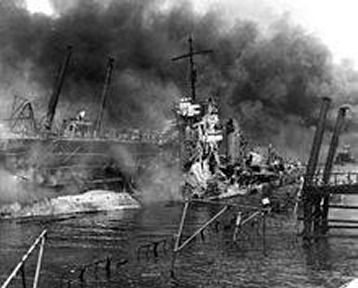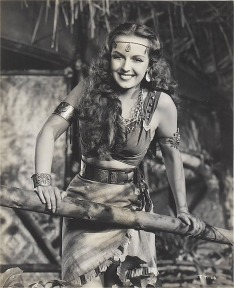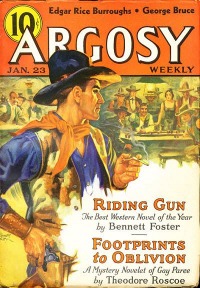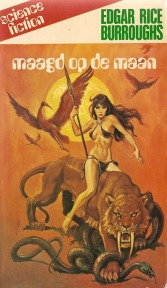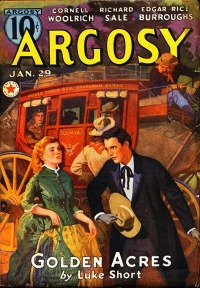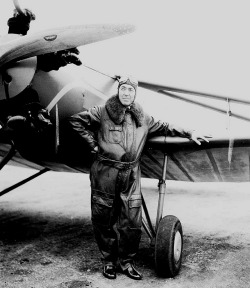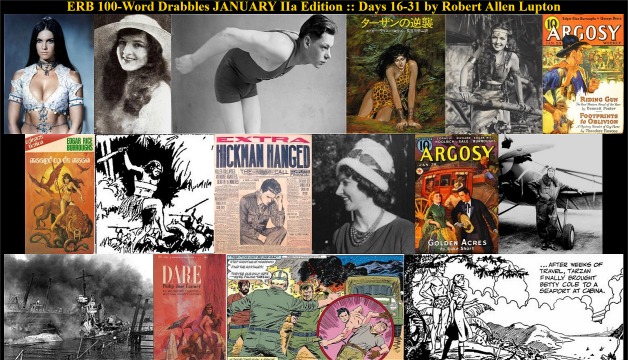
Official Edgar Rice Burroughs Tribute and Weekly Webzine Site Since 1996 ~ Over 15,000 Webpages in Archive Volume 7098a  |
ERB 100-Word Drabbles
JANUARY IIa Edition :: Days 16-31
Continued from Days 1-15 at ERBzine 7098
by Robert Allen Lupton
With Collations, Web Page Layout and ERBzine Illustrations and References by Bill Hillman
A PICTURE IS FOREVER
January 16: On this day in 1949, actress Caroline Monro was born in Windsor, Berkshire, England. She lived in Rottingdean near Brighton and attended a Roman Catholic convent school.
Besides starring in “At The Earth’s Core,” she appeared in several other films, including “The Abominable Dr. Phibes,” “Dracula A.D. 1972,” “The Golden Voyage of Sinbad,” and two James Bond films, “Casino Royale” and “The Spy Who Loved Me.” She made several Hammer Films and has the distinction of being the only actor ever signed to a long-term contract by Hammer Films. She turned down the lead female roles in Hammer's Dr. Jekyll and Sister Hyde (1971), Frankenstein and the Monster from Hell (1974), and the unmade Vampirella because they required nudity.
Today Caroline is a Trustee of the Ray and Diana Harryhausen Foundation. A Picture is Forever is today’s Edgar Rice Burroughs and Caroline Monro inspired drabble.
![]()
A Picture is Forever
“Caroline Monro answered, “My contract says I don’t do nudity. I don’t. They knew that when they offered me the role.”
“You sure.”
“Very sure. I refused to undress for James Bond. I won’t do it for Vampirella, Dr. Hyde, Frankenstein, or a monster from hell.
“Whatever did they say?”
“They showed me the costumes. They were fine. They
asked what’s the minimum clothing I’d wear.”
“How did you answer?”
‘’Caroline said, “Rating, G Rating. No nudity. A naked
picture is forever.”
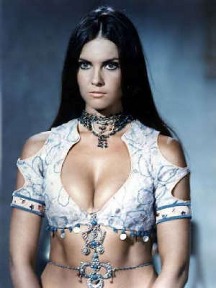
A TIME TO TEACH
January 17: On this day in 1980, Karla Schramm died in Newport Beach California. She was cremated and her ashes were returned to her Newport Beach home. Karla was the second actress to play Jane, appearing in "The Revenge of Tarzan" with Gene Pollar and then in "The Son of Tarzan" with P. Dempsey Tabler. Karla was only one of two women to play Jane opposite two different Tarzans. Brenda Joyce is the other. The Revenge of Tarzan was poorly received and her role in “The Son of Tarzan” was quite limited.
When she was around nine years old, she and her older sister Paloma toured the U.S. and Alaska as musical prodigies, giving piano recitals. Paloma received top billing. In 1914, Paloma married a chemical engineer in Los Angeles and retired from performing.
Karla travelled as a child pianist and composer through US, Canada, Mexico and Europe. She made her debut as a matured artist in Chicago at Music Hall. She was an accomplished swimmer and dancer. After retiring from the film business she taught piano. There is no evidence that she ever married.
“A Time to Teach” is today’s Edgar Rice Burroughs and Karla Schramm inspired drabble.
![]()
A Time to Teach
“Karla, I can dub your voice.”
“No thank you.”
Are you going back on tour with your piano recitals?”
“No. That’s a young girl’s life. I’m through spending all night on trains and performing in auditoriums and small town theaters to folks who want to hear “Turkey in the Straw” instead of Beethoven.”
“You could fly in airplanes?”
“I think not. I’ll live quietly and teach piano.”
“People will forget you starred in silent movies.”
“I certainly hope so.”
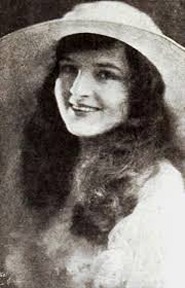
YOU CAN'T HANDLE THE TRUTH
January 18: On this day in 1954 the first Tarzan daily strip drawn by artist John Celardo, Tarzan and the Ghost, appeared in newspapers. His first Sunday strip was published on Feb. 28, 1954.
He first illustrated, then began writing the “Tarzan” comic strip. He did the strip for 15 years. Celardo included themes and current news, like race relations and current events affecting Africa, where the comic strip was set, such as socialism, Peace Corps efforts on the continent and the spread of new religions. There are stories that he was constantly in conflict with his editors at United Features over his news based story lines, but he always prevailed. President Eisenhower once wrote him, saying “I find your work.... almost too perceptive.”
In the 1950s, the Celardo produced the Tarzan comic strip for United Features Syndicate appeared in 225 daily and Sunday newspapers in 12 different countries. The first panel of the first John Celardo daily is posted with this strip.
Today’s Edgar Rice Burroughs drabble is “You Can’t Handle the Truth.”
You Can’t Handle the Truth
“The story is accurate. The Tarzan I know and write
about wouldn’t put up with it. He’d step in and fight the mine owners.”
“People want to read about great apes, lost civilizations,
and saving Jane from crocodiles.”
“Maybe thirty years ago. Today, people deserve stories
reflecting the real world.”
“Save it for the editorial page.”
“No. Honor and justice are never go out of style.”
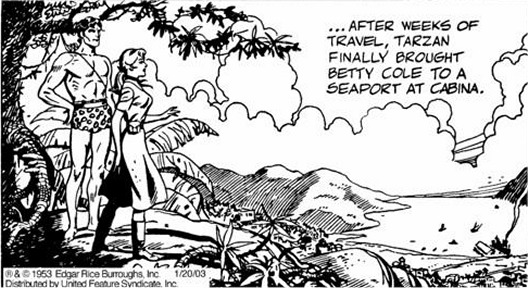
QUIT WHEN YOU'RE AHEAD
January 19: On this day in 1997, the Sunday Tarzan page began to run the story, “The Fossil Hunters and the Terrorists," by Gray Morrow, Desaro & McKay. The story ran for 16 weeks.
"Quit When You’re Ahead” is today’s Edgar Rice Burroughs inspired drabble.
Quit When You’re Ahead
While Tarzan battled to free the scientists, the ransom was paid. The terrorist leader freed the hostages, but was determined to detonate explosives and destroy the dig site. Tarzan said, “Stop now. You have your money.”
He pushed the detonator. “I’ll never stop.”
Tarzan had secretly moved the explosives and the terrorist
camp exploded.
The evil leader attacked Tarzan. “You killed my men.”
Tarzan stabbed him. “No, you killed your men. Quit
fighting once you have what you wanted.”
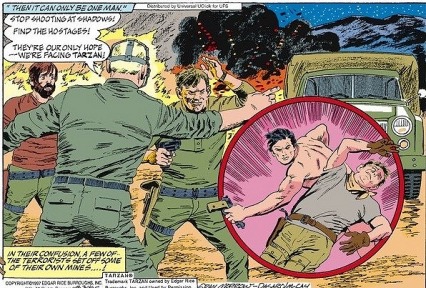
I CAN DO THAT
January 20: On this day in 1984, Johnny Weissmuller died from pulmonary edema at the age of 79. He was buried just outside Acapulco in Valle de La Luz at the Valley of the Light Cemetery. As his coffin was lowered into the ground, a recording of the Tarzan yell he invented was played three times, at his request. He was honored with a 21-gun salute, befitting a head-of-state, which was arranged by Senator Ted Kennedy and President Ronald Reagan.
Weissmuller won five Olympic gold medals and one bronze medal, 52 United States national championships, and set 67 world records. He was the first man to swim the 100-meter freestyle under one minute and the 440-yard freestyle under five minutes. He never lost a race and retired with an unbeaten amateur record. In 1950, he was selected by the Associated Press as the greatest swimmer of the first half of the 20th century.
Weissmuller starred in 12 Tarzan films and 16 Jungle Jim films. He played “Jungle Jim” Brady in the 26 episodes of television series with the same name.
Several articles about Weissmuller are available at ERBzine, including www.erbzine.com/mag3/0394.html.
The Shakespeare quote from Hamlet seems appropriate here. “Good night, sweet prince. And flights of angels sing thee to thy rest.”
Today’s drabble is from the Washington Post obituary, available online at washingtonpost.com. Let’s call it, “I Can Do That.”
![]()
I Can Do That
"I went to the back lot at MGM, they gave me a G-string and said, 'Can you climb a tree? Can you pick up that girl?' I could do all that, and I did all my own swinging because I’d been a YMCA champion on the rings," Mr. Weissmuller once explained.”

ON THE WATERFRONT
January 21: On this day, Edgar Rice Burroughs began writing “The Son of Tarzan.” He finished the novel in a little over four months. The story was made into a movie, adapted into a daily comic strip by Rex Maxon, serialized in newspapers, published as a Big Little Book and reprinted countless times in several languages. Korak, Tarzan’s son, had his own comic book and regularly appeared in Tarzan daily and Sunday comics.
Jack, aka Korak, bore little, if any, resemblance to “Boy,” as portrayed on screen by Johnny Sheffield.
The illustration for today is from Japan, the publisher was Hayakawa SF Books. The artist was Naoyuki Kato. Released on July 15, 1982, the Japanese title was “Tarzan no Gyakushu,” meaning “The Counterattack of Tarzan.”
Today’s Edgar Rice Burroughs inspired 100 word drabble is “On The Waterfront.”
On the Waterfront
“I know you. You’re Jack Clayton. I was Mildred Bloomstoke before I married your drunken great uncle, William Clayton. It’s not safe for a boy your age to be wandering around the docks.”
Jack grumbled, “If you see a boy anywhere about, you
should spank him and send him home straightaway.”
“Don’t be a cheeky little blighter. Shouldn’t you
be in school?”
“Yes, that’s true, aunt.”
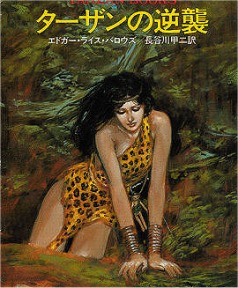
A FEW SMAL CHANGES
January 22: On this day in 1994, Frances Gifford died of emphysema in Pasadena. Some sources give other dates for her death, but the obituaries and her gravestone show January 22, 1994. Her cremated remains are at the Holy Cross Cemetery in Culver City, California.
Sadly, on December 31, 1947, Gifford was almost killed in a car accident. The event sidelined her career and caused a decline in her health. She received severe head injuries, resulting in a drastic change in her personality. She lost confidence in her abilities and found it difficult to return to films. During the 1950s, her mental and physical health declined to the point where she was placed into Camarillo State Mental Hospital in 1958. She spent almost the entire next 25 years in and out of various institutions. She eventually recovered and lived in obscurity for several years. She did volunteer work at a public library for several years prior to her death.
A talented actress, she appeared in several films including the 1941 serial, “Jungle Girl,” The serial was officially based on Edgar Rice Burroughs' Jungle Girl novel. Nevertheless, it bore almost no resemblance to the novel, which had no character named "Nyoka" and was about an Asian princess, not a white woman living in Africa. Like many Republic adaptations, the contract to use a character called the Jungle Girl meant that showings of the serial after a set date were banned. Jungle Girl was the first talking serial with a female lead.
In 1943, she appeared as Zandra in the film, “Tarzan Triumphs.”
Today’s Edgar Rice Burroughs and Frances Gifford inspired 100 word drabble is “A Few Small Changes.”
![]()
A Few Small Changes
“We changed your name. Fou-tan sounds like a place
to drinking fountain.”
I’m should be a beautiful princess, not a small town
American girl.”
“Changed that too.”
“You moved the story from Cambodia to Africa.”
“People expect jungle movies to be in Africa.”
“You change the storyline?”
“I’ll make up the story as we go.”
“Unbelievable, my name means snake, but it’s clear
who’ll be slithering around the set.”
GREAT STAMPEDE
January 23: On this day in 1937, Argosy Weekly published part three of “Back to the Stone Age” entitled “Seven Worlds to Conquer part three of six.” The cover, drawn by Emmett Watson, illustrated the first episode of the six part western, “Riding Gun” by Bennett Foster. Burroughs didn’t receive a cover mention.
William Bennett Foster was born on August 26, 1897, and he wrote over 200 western stories and novels, along with some western screenplays. “Riding Gun” was his first sale to Argosy. Other writers with stories in the issue include L. Ron Hubbard (Flying Trapeze), Theodore Roscoe (Foot Prints to Oblivion), and John St. John (Brainiest American.) In spite of his prolific career, Bennett Foster doesn’t have a single book currently listed on Amazon and the Gutenberg Project doesn’t offer any of his writings.
For “Back to the Stone Age” publishing history and a cover gallery visit http://www.erbzine.com/mag7/0745.html.
The Edgar Rice Burroughs inspired 100 word drabble today is from the prologue to “Seven Worlds to Conquer,” as the story was called when published by Argosy Weekly. The 100 words are from the end of the prologue and were written by an unknown member of the Argosy staff. Let’s call it “Great Stampede.”
![]()
Great Stampede
“Von Horst was doubtless killed,” was the general verdict. “We must return—“
But Jason Gridley shook his head. “The rest of you go on,” he said. “I will remain in Pellucidar until I have solved the mystery.”
MOONLIGHT MADNESS
January 24: On this day in 1922, Edgar Rice Burroughs rewrote a brilliant piece of anti-Communist fiction. “Under the Red Flag” was written over 30 years before Orwell’s Animal Farm, but in 1919, but no one would publish it. The story was rejected 11 times by magazine publishers including Saturday Evening Post and Argosy All-Story.
The unpublished story was filed away. Burroughs was determined to salvage something from his time spent writing “Under the Red Flag.” During a single day in 1922, he rewrote the tale. It was still set in the 22nd Century, but the Bolsheviks brecame into Kalkars, a brutish, mongrel breed of lunar invaders. President Petrov became Jarth, Jemadar of the United Teivos of America. Commander Bergst of Chicago ’s Red Guard was transformed into Brother-General Or-tis, the new Commandant of Chicago. And James Julian, the story’s tragic lead character, morphed into Julian the Ninth, one in a long line of Julian family heroes. Burroughs re-titled the story “The Moon Men” and cleverly made it a sequel to an as-yet-unwritten story.
Thomas Metcalf bought the rewritten story and it was published by Argosy All-Story Weekly as “The Moon Men” in 1925. The illustration is from an edition published in Dutch.
“Moonlight Madness” is today’s Edgar Rice Burroughs inspired drabble.
Moonlight Madness
“Mr. Metcalf, I only changed the names. Anyone with a normal bean will know that the story is about communists.”
“Indeed, but implying and stating are different. Better to let the reader draw his own conclusions rather than slapping him in the face.”
“As you say. Appreciate the check.”
“Why did you base the rewrite on men from the moon?”
“The word ‘lunatic’ originated in the 14th century.
People believed the moon made people crazy. Infer what you want from my
choice."
FATHER TO THE STARS
January 26: On this day in 1918, author extraordinaire Philip Jose Farmer, was born in North Terre Haute, Indiana. Farmer was a three time HUGO award winner. In 2000, he received the Damon Knight Memorial Grand Master Award and in 2001, The World Fantasy Award for Life Achievement.
His over 60 novels and 100 short stories included Edgar Rice Burroughs’ pastiches, sequels, and a biography. Lord of the Trees, A Feast Unknown, and The Mad Goblin, akaThe Empire of the Nine (Keeper of Secrets) contain characters that are thinly disguised Tarzan and Doc Savage.
Lord Tyger was published in 1970, Tarzan Alive, A Definitive Biography of Lord Greystoke in 1972, Time’s Last Gift in 1972, and The Adventure of the Peerless Peer (Tarzan and Sherlock Holmes) in 1974. The Dark Heart of Time was originally published in 1999, in which Tarzan uses the name John Gribardsun. The Khokarsa series, includes the Giribardsun version of Tarzan using the name Sahhindar. The series includes two novels by Farmer, and two co-authored with Christopher Paul Carey, who has written other books in the series.
Farmer also wrote one Oz book. Loved it.
I met Mr. Farmer three times. Always pleasant and the second and third times, he remembered my name.
Today’s 100 word drabble is inspired by Philip Jose Famer, who was inspired by Edgar Rice Burroughs. Let’s call it “Father to the Stars.”
![]()
Father to the Stars
“Yes, I dreamed a chained in a bottomless pit. I could hear people talking about strange relations. They said the caterpillar had a question about a naked farmer living outside a city beyond play."
“Phil, that’s not exactly a love song."
“No, Betty, it was the dark of the sun and fire in
of the night. There was a Lord Tyger wearing an unreasoning mask. He spoke
with the tongue of the moon. He said, “Inside outside, nothing burns in
hell like good intentions.”
“Write it down before you forget it.”
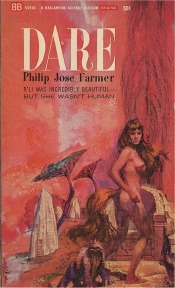
ENDLESS QUEST
January 25: On this day the first episode of the Tarzan daily comic strip, Tarzan and the Ant Men,” written by R. W. Palmer and drawn by Rex Maxon, was published. The story strip was collected and published as the Big Little Book of the same title. The strip ran for 126 days. The first Ant Man did not appear until strip # 29. The first panel of that strip is attached. The artwork, typical of Rex Maxon, looks primitive and unfinished compared with other Tarzan artists.
“Endless Quest” is today’s Edgar Rice Burroughs inspired drabble.
![]()
Endless Quest
Elkomoelhago replied, “This is our land, but the jungle is dangerous for us. Many creatures, including giants like you, consider us prey. We kill or enslave giants that we find while we search the jungle.”
“You said search the jungle, not hunt in the jungle
Is there a difference.”
“Yes, there is. My little bitty warriors, as you call
them, have searched the jungle for countless generations. It is our way.”
“What are they searching for?”
“Little bitty men search for little bitty women.”
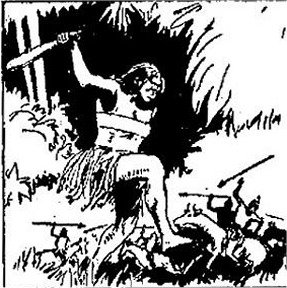
JURY SELECTION
January 27: On this day in 1928, Edgar Rice Burroughs wrote the first of a series of articles for the Los Angeles Examiner about the trial of William Edward Hickman for the kidnapping and murder of twelve year old Marion Parker. Hickman demanded a ransom and arranged to meet Marion’s father who delivered the ransom. Hickman delivered the dismembered body of the child.
Hickman pleaded insanity – to no avail. He was convicted and executed for the crime.
All of the Edgar Rice Burroughs articles about the trial are available at www.erbzine.com/mag17/1768.html
Burroughs was justifiably horrified by the crime and his newspaper articles reflected his outrage and the outrage of the people of California.
The drabble today, Jury Selection, was written by Edgar Rice Burroughs and is a small piece of his article dated January 27, 1928.
![]()
Jury Selection
After watching Hickman all day, I’ll venture the assertion,
if he’s crazy I’m Professor Einstein.
We’re now in the throes of selecting a jury, which appears
to consist largely of discovering twelve good men and true women who never
read a newspaper, never knew anything, and not only never had an opinion,
but have not even talked with any person who had.
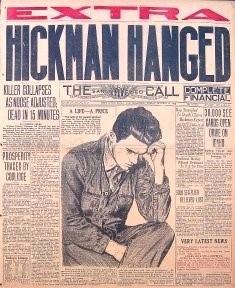
EFFORT IN YOUR VOICE
January 28: On this day in 1963, Jane was killed by a shark in Sugerloaf Bay near Sydney, Australia. Marcia Hathaway was the first actress to play Jane on the Australian radio series, Tarzan, King of the Apes, opposite actor, Rod Taylor.
Marcia appeared on several radio shows in the fifties and had made a successful transition to films just before her death. Very few films were made in Australia prior to 1960.
Hathaway was wading in Sydney harbor when she felt her right calf tear open.
Her fiancée, Frederick Knight, rushed to Hathaway’s side. He wrestled the shark to stop it from dragging her further into deep waters.
“I saw a fin and its girth as I straddled it. My legs were wide apart, and its body touched both of them. The water was stained with blood, and I never thought I would get her away from it. I think at one stage I had my foot in its mouth. ''
Sheets were torn from the nearby cruiser, Valeeta, to bandage the wound. Knight swam for help and called an ambulance to meet the boat at Mowbray Point.
Unfortunately, for Hathaway, the ambulance broke down just before the road from the harbor. 30 people pushed the ambulance towards Hathaway, but the hill was too steep. By the time the second ambulance had arrived, Marcia Hathaway had stopped breathing.
For details on the radio series, go to my article at www.erbzine.com/mag67/6749.html.
There are numerous photos of the aftermath of the shark attack online. Search Marcia Hathaway and you’ll find them. The picture with today’s article isn’t one of those.
The drabble for today is a conversation that never took place. Call it “Effort in Your Voice.”
![]()
Effort in Your Voice
“Yes. I can do the yell in my sleep.”
“You’re playing Jane. Jane doesn’t yell. I need you to sound brave, but fearful. Self –reliant, but needy, and concerned, but optimistic.”
“You left out, smart, but silly.”
“Excuse me.”
“Never mind. That’s a lot of emotions for a twelve
minute script when I’ve only ten lines.”
“We’re on air in six minutes. Can you do this?”
“Certainly, I’ll even throw in some irony, wistfulness,
and pluck if you want.”
“Read the lines. No one likes a smartass.”
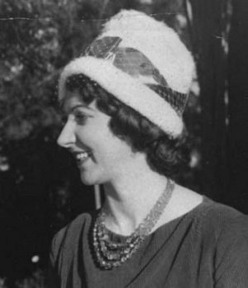
STYLISH HAIRCUT
January 29: This is the 600th consecutive post in this series of Edgar Rice Burroughs inspired 100 word drabbles. On this day in 1938, Argosy Magazine published part four of “Carson of Venus.”
The cover was drawn by Gayle Hoskins and it illustrated the first installment of the serialized story “Golden Acres” by Luke Short (Frederick Dilley Glidden), a popular western writer who produced 47 novels and several short stories.
Cornell Woolrich’s short story, “Death in the Yoshiwara” also appeared in the issue as did, “Passage to Nantua” by Richard Sale.. Sale wrote over four hundred short stories and several screen plays. He has a second ERB connection. Along with his wife, Mary Loos, Sale created the television show, “Yancy Derringer,” which, of course, starred Tarzan actor, Jock Mahoney.”
Woolrich, Sale, and Burroughs were all three mentioned on the cover – above the masthead.
Today’s Edgar Rice Burroughs inspired drabble is “Stylish Haircut.”
![]()
Stylish Haircut
“How can you protect me?”
“I created several Zani rituals. Whenever the leader passes, the citizens have to stand on their heads and shout, “Maltu Mephis. I’ll make you an army officer, but you’ll have to wear your hair into a single strip down the middle.”
“That’s stupid. Why would I wear my hair like that?”
“It’s the Zani way. Trim your hair or we’ll trim your
beard with one slash across your throat.”
Carson saluted. “Maltu Mephis Where’s the barber?”
DOWN MEXICO WAY
January 30: On this day in 1938, Edgar Rice Burroughs completed writing the 29,000 word story, “Two Gun Doak Flies South.” He submitted the story under his pseudonym, John Tyler McCulloch. Burroughs submitted the story to Liberty, Cosmopolitan and Blue Book. All three passed. Liberty’s rejection said the quasi-humorous story had some amusing moments, but “it’s a pretty inexpert job.”
Cosmopolitan rejected the story on February 25, 1938 – less than a month after Burroughs finished the story.
Some sources give January 31, 1938 as the day the story was completed.
Irwin Porges summarized the unpublished story on Pages 895 -897 of “Edgar Rice Burroughs: The Man Who Created Tarzan.” A group of passengers climb aboard a TWA plane in Los Angeles. The flight is hijacked and diverted to Mexico instead of New York City.
The first airborne hijacking took place in 1956, Frank Iszak was a 25-year-old forced laborer in a Hungarian brick factory. He hatched a far-fetched plan with a fellow laborer who happened to be a former fighter pilot.
On July 13, 1956, they boarded a small plane, and launched the world's first known hijacking. It wasn’t easy. A KGB officer was on board, and they had avoid the Alps, deal with precipitous drops, and finally an empty fuel tank.
The bruised and bloody group made it to freedom, crash landing in West Germany.
Burroughs wrote his story before the first recorded airborne hijacking. If it had seen print he would, no doubt, be praised as a prophet by some and condemned others for creating the idea in the first place.
Today’s Edgar Rice Burroughs inspired drabble is “Down Mexico Way.”
![]()
Down Mexico Way
The pilot said, “I haven’t turned off the fasten seat belt lights.
You have to sit down. You may not move about the cabin.”
“Turn the plane now. I don’t need you. My buddy, Doak, is a pilot”
“Planes in Mexico use petrol, not gasoline. We got no petrol, we’ll crash.”
Shultz cocked his pistol. “You can be drinking margaritas in an hour or pushing up daisies in ten seconds. Your call.”
The plane turned south. “I like mine on the rocks with a salted rim.”
GENERAL QUARTERS
January 31: On this day in 1943, war correspondent Edgar Rice Burroughs was on the Destroyer USS Shaw. ERBzine Reference: ERB Wartime Journals ~ January 31, 1943
General Quarters sounded at 4:15 AM and the crew stayed at battle stations until 5:15. All doors and hatches are closed and locked. The hour before dawn was considered the most likely for submarine attacks, and similar precautions were taken every day.
Burroughs visited the head about 4:00 and was surprised that the water was shut off. He was more surprised to find himself locked below decks. Fortunately, an officer found him and let him go on deck – in his pajamas.
Among the drydocked ships in the Pearl Harbor Navy Yard when the Japanese attacked was the destroyer USS Shaw (DD-373). Three bombs struck the forward portion of the ship. The resulting fires proved uncontrollable, and Shaw was ordered abandoned. (The photo with this post is of the USS Shaw during the attack.)
Though USS Shaw was originally thought to be a total loss after the Pearl Harbor raid had destroyed her bow area, but the damage in her machinery spaces and further aft was minor. The Shaw war repaired and given a temporary bow.
She was taken to the Mare Island Navy Yard In California where she received a new bow section, bringing her back up to the same appearance and combat effectiveness as the other ships of her class.
Edgar Rice Burroughs wrote today’s drabble, “General Quarters.”
![]()
General Quarters
